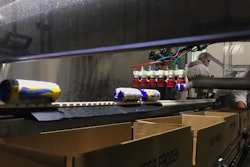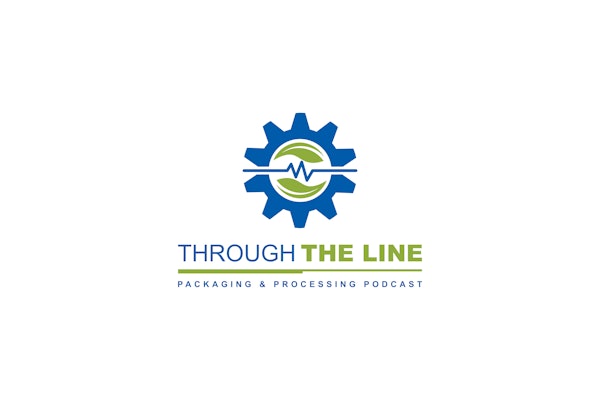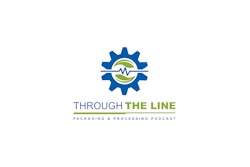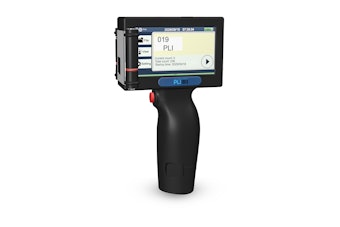
Imagine the scenario. Your company has spent the last decade perfecting the next breakthrough medicine. Millions of dollars and tens of thousands of labor hours have been poured into years of research and development.
But the packaging and labeling is overdue. There have been multiple rounds of review with colleagues all over the world leading to issues with version control.The internal pressure is intense. But at last, approval is achieved, the first boxes roll off the production line and are shipped to customers.
Then disaster strikes—A pharmacist notices packaging and labelling artwork errors; a decimal point in the wrong place on a label and a mistake in one of the language translations. There is only one option—an entire product recall.
Avoid the worst-case scenario
This is the kind of event that keeps packaging teams, marketing teams and product managers awake at night. Although errors don’t always lead to recalls, packaging and labeling challenges occur on a regular basis in the pharmaceutical and life sciences industry.
We all want an efficient, stress-free process, resulting in attractive, error-free packaging and labeling, which is fully compliant and virtually counterfeit-proof.But it doesn’t always go that smoothly. Here are five of the most common labeling and artwork hurdles, and how to avoid them.
One: Compliance concerns
As pharmaceuticals come under ever-greater regulatory scrutiny, the biggest concern for pharmaceutical and life sciences companies is compliance. All labeling for packaging needs to be in compliance with local regulatory requirements and current Good Manufacturing Practice (cGMP) guidelines and principles to avoid any safety issues.
“The whole operation is a highly regulated and GMP-sensitive operation, and that is where one of the challenges around artwork comes in,” says Andrew Love, Packaging and Artwork Management Strategist and VP at Be4ward Ltd., a specialist consulting service firm to the pharmaceutical and other highly regulated industries. “The people in your manufacturing and supply operation understand GMP very well because they live in that world all the time. However, if you think of the external distributors that you are using to market your product, do they all have a thorough understanding of GMP? As you move out of manufacturing and through regulatory and into commercial, the familiarity with GMP can reduce.”
Furthermore, local regulations are becoming ever more complex. “While there is activity in working towards more harmonized regulations, the global nature of pharmaceutical supply chains results in companies having to deal with a wide range of local regulations,” notes Love. “There is always a need for new regulation, but this increasing volume of local regulation makes it increasing complex to stay in compliance and requires the regulatory organization to be very adept at interpreting new requirements.”
Two: Process problems
Outdated manual processes are a critical source of errors. Too many assets stored in too many different places being e-mailed to too many people; it can be difficult for companies to cope. With multiple people working with multiple documents, companies run the risk of working off of incorrect or outdated information.
“For a large global pharmaceutical company, developing artwork for thousands of products is typically a process involving thousands of people, in over 100 countries, from tens of different organizations,” says Love. “To orchestrate all of this activity, the right combination of business processes, organization design, information technology, facilities, and suppliers has to be managed.”
Too often there are process gaps and inconsistencies, systematic errors that occur when the design of the business processes are incomplete or conflicting, ultimately leading to errors in the content of the artwork.
The complexity only increases with the number of stockkeeping units (SKUs) being developed by companies. With weakening pipelines and regulatory pressure, pharmaceutical and life sciences companies are looking to make the most out of their current assets, launching as many product variants in as many markets as possible.
Three: Recall risks
Product recall is perhaps the worst nightmare scenario of all – particularly if patient safety is at risk. It is estimated that over 50% of product recalls are related to the labeling or the packaging artwork, and over 60% of all recalls are caused by human error.
The consequences of product recalls are dire. As well as potentially serious risks to patient safety and regulatory body compliance issues, there are potentially fines, reputational damage and even job losses.
When is a recall warranted? “The further down the supply chain the error gets, the more serious it is because the closer to the patient it becomes,” says Love.
Errors sometimes occur with labeling due to the vast amount of product-related data companies have as the foundation for their labelling. The data is often in non-user-friendly file formats, stored in multiple locations; companies have to manually compile and cross-check labelling data, and this is error-prone.
Four: Quality quibbles
While recalls are the extreme end of the spectrum, there are potential quality control issues throughout the entire packaging and labeling process. First there is the quality of the packaging design itself. This needs to be fit for purpose and appropriately tested and validated. It needs to meet legislative requirements, for example, child resistance and Braille, provide required anti-counterfeiting measures and be ready for forthcoming serialization legislation.
Then there’s quality of processes and quality management controls. Even if errors do not necessitate a recall, they can still represent a quality defect, and that should still be viewed as a serious incident.
Five: Slow speed setbacks
Everything mentioned above ultimately leads to one thing; delays in getting your products into the hands of patients who need them.
It is already a pressurized environment without these added setbacks. Once the label text has been agreed with the regulator, for most markets it’s then a real rush to have the packaging components ready, have the product packed and get it out onto the marketplace. The last thing companies want is to find a mistake at that point, because then they have to go back through the whole process again.
The consequences of delays can be significant. Every day that a pharmaceutical product is delayed is another day eaten into the limited patent protection time. The cost impact can be substantial. There are the immediate tangible costs of repacking and market re-supply and the less tangible follow-on costs through loss of sales and market share and customer reimbursement. In the extreme, these not only impact the bottom line, but can directly influence the company’s share price.
Once things start to go wrong, panic can set in, according to Love. “You can have this concertina effect where you are putting everybody under more and more pressure to have the mistakes fixed but still achieve the launch date, and that is when more mistakes happen. It becomes an interesting question – do you want to launch late, or do you want to launch on time with the wrong information?”
Towards a solution: finding the complete package
The key priorities for companies are to reduce the risk of errors at every single stage of production and to ensure they are fully GMP-compliant.
To address these challenges, pharmaceutical and life sciences companies need to build quality into their processes and maintain absolute control of the entire packaging and labeling process, including all assets, communication and interaction with stakeholders.
How can companies do this? One way to take control is through digital packaging management systems. These can bring control, quality, compliance and visibility to pharmaceutical and life sciences companies’ packaging and labeling processes, driving quality, GMP compliance and security.
Three benefits of packaging management systems
“First, you can improve visibility of what is happening with artwork changes in the system – people can see upfront what work is heading towards them and can plan their time better,” explains Love.
“The second thing is, by having your document management working in a closed-loop system, it means that you are more confident that everybody is looking at the right version at the right time. Then I think the third thing is the online proofreading tools that have become available over the last few years. They take out a lot of human error.”
All of which, Love suggests, brings reassurance around GMP compliance and reducing recall risk. “I always come back to the main business case, the one around compliance, and there is a whole series of compliance benefits that these systems bring, so you have a thorough control of you process,” he says.
Artwork management systems ensure everyone is looking at the right documents at the right time, with a proper electronic signature that’s validated and controlled and drives the higher level of accountability.
“There’s a whole raft of improvements to the process that putting a digital solution in can help with,” says Love. “It hardwires the process and people have to follow the process.”
We all want to avoid packaging and labeling hurdles. Managing the artwork production for packaging and labels in the most cost-effective way is becoming more and more complex. Packaging management systems are rapidly becoming the standard way for brands to streamline their labeling and artwork production process.
Editor’s note: Author Philippe Adam is Vice President, Global Marketing for Esko, a Belgium-based sales and service organization whose products support and manage the packaging and print processes.


























